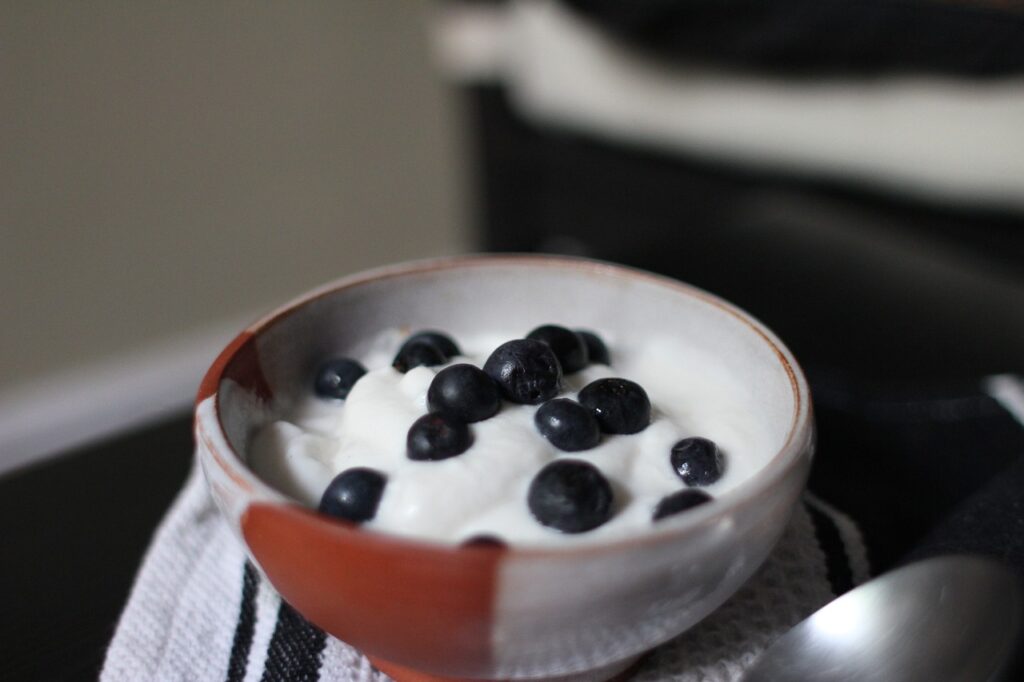Whether you’re an athlete, fitness enthusiast, or simply someone looking to improve their quality of life, understanding the importance of muscle mass is essential.
We will explore the benefits of having optimal muscle mass, address common misconceptions, and provide practical tips on developing and maintaining muscle throughout different stages of life.
JUMP TO…
Why is muscle mass important for health?
5 reasons why muscle mass is important
The relationship between muscle mass and fat
Understanding muscle loss and age-related changes
Debunking myths and misconceptions
Strategies for building and maintaining muscle mass
6 minute read
Why is muscle mass important for health?
The scientific evidence overwhelmingly supports the importance of muscle mass for overall health and well-being. From boosting metabolism and aiding in weight management to improving insulin sensitivity, enhancing bone health, promoting cardiovascular health, and enhancing physical performance, optimal muscle mass is crucial.
Incorporating resistance training and other forms of exercise that promote muscle development into our routines can have profound long-term benefits.
By prioritizing muscle mass, we can optimize our health, improve quality of life, and age gracefully.
5 reasons why muscle mass is important:
1. Boosting metabolism and weight management
Having a higher muscle mass can significantly impact our metabolism. Muscle tissue is metabolically active, meaning it requires more energy (calories) to maintain compared to fat tissue. This increased energy expenditure contributes to a higher resting metabolic rate, which can aid in weight management and prevent weight gain. Multiple studies have shown that individuals with higher muscle mass have a higher basal metabolic rate and are more effective at maintaining a healthy weight.
2. Improving insulin sensitivity and glucose control
Muscle tissue plays a crucial role in glucose metabolism and insulin sensitivity. When we engage in physical activity that promotes muscle development, such as resistance training, it enhances our muscles’ ability to take up glucose from the bloodstream and utilize it for energy. This improved insulin sensitivity can lower the risk of developing type 2 diabetes and help manage blood sugar levels more effectively.
3. Enhancing bone health
Strong muscles provide support and stability to our bones. Engaging in weight-bearing exercises, such as resistance training, helps stimulate bone growth and density. Studies have shown that individuals with higher muscle mass have a reduced risk of osteoporosis and fractures, as the muscles exert greater force on the bones during exercise, promoting bone remodeling and strengthening.
4. Promoting cardiovascular health
Having optimal muscle mass is associated with improved cardiovascular health. Regular exercise, including resistance training, can help lower blood pressure, improve blood lipid profiles, and enhance overall cardiovascular function. Additionally, increased muscle mass is linked to a decreased risk of cardiovascular diseases such as heart disease and stroke.
5. Enhancing physical performance and functional abilities

Muscle mass is a significant determinant of physical performance and functional abilities. Whether it’s lifting objects, climbing stairs, or participating in sports, having well-developed muscles provides the strength, power, and endurance required for optimal performance. Maintaining muscle mass is particularly important as we age to preserve functional independence and prevent age-related declines in mobility.
The relationship between muscle mass and fat
Muscle and fat have contrasting characteristics and functions within the body.
Muscle and fat differ in their composition.
Muscle tissue is primarily composed of muscle fibers, which are contractile proteins responsible for generating force and movement. Fat tissue, on the other hand, consists of adipocytes (fat cells) that store energy in the form of triglycerides.
Muscle is metabolically active, dense, and contributes to a higher metabolic rate. It supports weight management, improves insulin sensitivity, and enhances overall health and physical performance. In contrast, fat tissue stores energy and excess fat accumulation, particularly visceral fat, can increase the risk of various health conditions.
Muscles can use fat as an energy source.
Especially during prolonged exercise or activities that require endurance, muscle uses fat for energy. When you engage in low to moderate-intensity activities, your body relies more on fat stores for energy than on carbohydrates. This is because fat provides a steady and long-lasting source of energy.
Maintaining a balance between muscle and fat is crucial for optimal health.
Regular exercise, including resistance training, promotes muscle development, while a healthy diet and lifestyle help prevent excessive fat accumulation. Striving for a higher proportion of muscle mass and a lower percentage of body fat supports weight management, metabolic health, and reduces the risk of chronic diseases.
Understanding muscle loss and age-related changes

Muscle loss, also known as sarcopenia, is a natural process that occurs as we age. It can have significant consequences for our health and quality of life. Several factors contribute to muscle loss:
- Aging: As people age, there is a natural decline in muscle mass and strength [for a number of reasons like decreased muscle protein synthesis, increased muscle breakdown due to increased oxidative stress, & more]. This decline can begin as early as the age of 30 but typically becomes more noticeable after the age of 50.
- Hormonal Changes: Hormonal changes, such as a decrease in testosterone and growth hormone levels, can contribute to muscle loss.
- Inactivity: Lack of physical activity or sedentary lifestyle can accelerate muscle loss. Muscle tissue requires regular stimulation through exercise to maintain its mass and strength.
- Poor Nutrition: Inadequate protein intake and nutrient deficiencies can impair muscle maintenance and growth.
Physical activity plays a crucial role in mitigating age-related muscle changes.
Regular exercise, particularly resistance training or strength training, can help preserve muscle mass, improve muscle strength, and enhance overall physical function in older adults. Exercise also stimulates muscle protein synthesis and helps in the maintenance of muscle mass.
Common diseases that can lead to muscle wasting include:
- Chronic diseases: Conditions such as chronic obstructive pulmonary disease (COPD), heart failure, and cancer can lead to muscle wasting due to increased metabolic demands, inflammation, and reduced physical activity.
- Neurological disorders: Diseases like Parkinson’s disease, multiple sclerosis, and spinal cord injuries can result in muscle atrophy due to impaired nerve function and reduced muscle activation.
- Endocrine disorders: Hormonal imbalances caused by conditions like diabetes, hyperthyroidism, and adrenal insufficiency can contribute to muscle loss.
Muscle loss is a natural part of aging, but several factors can accelerate this process. Regular physical activity, proper nutrition, and early detection and intervention of underlying diseases are essential strategies to mitigate age-related muscle changes and maintain muscle health.
Debunking myths and misconceptions
Q1: Is too much muscle bad for the heart?
A1: Excessive muscle mass, particularly when achieved through the use of anabolic steroids or other performance-enhancing drugs, can potentially have negative effects on heart health. It can lead to cardiac hypertrophy, increased blood pressure, and a higher risk of cardiac arrhythmias, such as atrial fibrillation.
Additionally, the use of performance-enhancing drugs can further elevate the risk of heart-related complications, including heart attack and stroke.
However, building muscle through a balanced exercise routine, proper nutrition, and avoiding the use of performance-enhancing drugs can help promote overall heart health and reduce the risk of cardiovascular diseases.
Q2: Can you turn fat into muscle?
A2: This is a common misconception. Fat and muscle are two different types of tissues, and you cannot directly convert one into the other. However, you can lose fat and build muscle simultaneously through proper diet and exercise.
Q3: Does more protein build more muscle?
A3: While protein is essential for muscle growth and repair, consuming excessive amounts of protein beyond what your body needs will not necessarily lead to more muscle mass.
Adequate protein intake, combined with resistance training, is key to muscle growth.
Q4: Can muscle turn into fat if you don’t exercise?
A4: Muscle tissue and fat tissue are different and cannot convert into one another. If you stop exercising, you may lose muscle mass and gain fat due to changes in your metabolism and energy balance, but muscle does not “turn into” fat.
Strategies for building and maintaining muscle mass
Building and maintaining muscle mass require a multifaceted approach.
The impact of muscle mass on longevity
Research suggests that muscle mass plays a significant role in longevity.
Takeaway:
In conclusion, muscle mass is not just about aesthetics or strength; it is crucial for overall health and well-being. Understanding the importance of muscle mass allows us to make informed choices regarding our fitness routines and lifestyle habits.
By incorporating strength training, proper nutrition, and healthy lifestyle practices, we can optimize muscle development and maintenance at every stage of life.
So, let’s embrace the power of muscle and embark on a journey towards a healthier, stronger, and more vibrant future.


